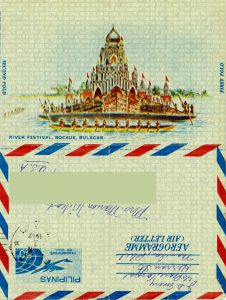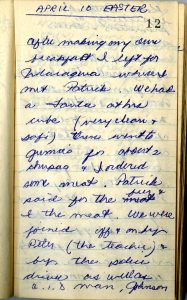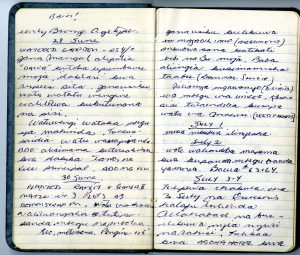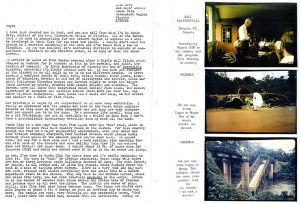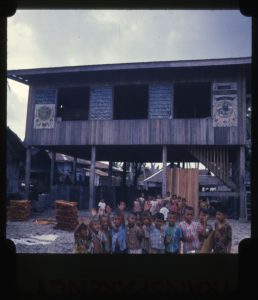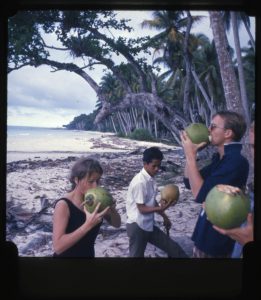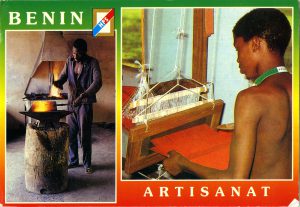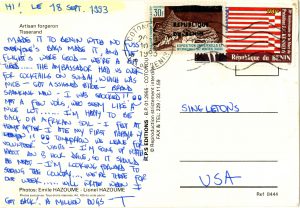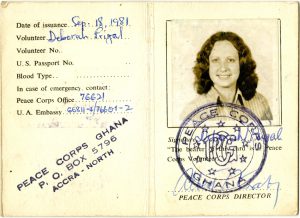When President Kennedy signed the Executive Order to establish the Peace Corps in 1961, he sought to “encourage mutual understanding between Americans and people of other nations and cultures.” Kennedy’s words echoed in the ears of those who lived during a decade of social tension and Cold War anxieties. Since the 1960s, the Peace Corps has trained and placed more than 235,000 volunteers, all joining for their own personal reasons: for peace, to improve the lives of others, and to learn new cultures. Several volunteers: Carolyn Gullat, Clinton Etheridge, Yancy Garrido, Shawnette Brandt, and Amina Johari, shared their desire to benefit the countries of their ancestors and reconnect with their heritage.
Carolyn Gullat is a Black Peace Corps Volunteer from Washington, D.C. She served as a teacher in South India from 1966-1968. Gullatt describes her choice to join the Peace Corps in an interview from Jonathon Zimmerman’s “Beyond Double Consciousness: Black Peace Corps Volunteers in Africa, 1961-1971,” featured in the December 1995 issue of the Journal of American History:
“For most of her own college career, Gullatt recalled, she had dismissed the Peace Corps as ‘for whites only.’ Then she met a Black recruiter, who ‘didn’t run down the usual jive propaganda about how nice it is to help people.’ Instead, ‘he talked about how I, as a Black person, could get ‘home’ and join with the Brothers and Sisters’ abroad, where ‘people have grown into Black pride naturally, where Black power is the status quo, and Black action is a working reality.’
“’Each year the Peace Corps sends hundreds of white ‘do-gooders’ to ‘help’ Black and Brown people throughout the world,’ Gullatt complained. ‘Black Americans owe it to themselves and to the Brothers and Sisters in developing countries to get up and get involved.’ – Page 1000, interview with Carolyn Gullatt by Donald M. Feeney, c.1971.
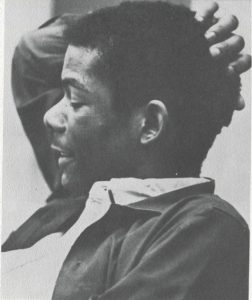
Clinton Etheridge joined the Peace Corps in 1970 and became the first African-American PCV to serve in Gambia, West Africa. Read more about Etheridge’s experience in an interview with Peace Corps Worldwide.
“I was a secondary school math teacher in Peace Corps Gambia from 1970-1972. I grew up in Harlem, came of age during the Civil Rights Movement, and was a black student leader at Swarthmore College in the late 1960s. Like many young blacks of that generation, I wore an afro and dashiki and was ‘black and proud’ and fascinated with Africa. I joined Peace Corps Gambia seeking my own answer to the question ‘What is Africa to me?’ posed by Harlem Renaissance poet Countee Cullen in his 1925 Heritage.
“I started out asking the question, ‘What is Africa to me?’…Then I asked the question, ‘What am I to Africa?’ when that Latrikunda schoolboy told me he didn’t have the math book to do the homework with because his father was ‘a poor Gambian farmer.’ Then, as a Stanford SEED business coach, I came to the conclusion that, moving forward; an important question will be ‘What is Africa to the world?’” “What is Africa to Me?” National Peace Corps Association, June 4, 2018.
Yancy Garrido was born to Cuban parents who immigrated to the United States during the Cuban Revolution. Between January 1987 and August 1990, Garrido served as a Peace Corps Volunteer in Honduras within a community mental health program. In his interview with the Oral History Project at the John F. Kennedy Presidential Library, Garrido explains his personal desire to serve in Latin America.
“I’m the son of Cuban refugees. My parents left Cuba because of the Cuban Revolution. Actually, would probably have never met if it had not been for the United States because my mother was the daughter of Batista’s diplomatic photographer—no one of high importance in the government, but still in the government—and my father cut sugar cane on a farm…But they met in New Jersey. And so, always in my mind was just being thankful for living in the United States. For having opportunities that I never would have had. So it was always in my mind, “How could I give back?”—not necessarily Peace Corps at the time, but to Latin America and represent my country…
“When the Peace Corps Volunteer came, the way they spoke about the experience was exactly what I wanted…The way it was pitched, I never thought Peace Corps was going to appeal to me…Once I spoke with the volunteer—they went “No, no, no—don’t get stuck with the messaging. You’re really going and working another country and you are trying to see if you can add value. And, if all goes well when you leave you’ll have helped establish something and people will continue that project without you.” The idea was to help get things started, not to actually take the place of someone. Because the last thing I wanted to do is take someone’s job.”
“So I applied, and of course my professors did not want me to go. They were grooming me to go get my doctorate and go be a professor of Spanish literature. My parents did not want me to go because they said “We left Latin America for you. Why are you going back?” But I went, and it’s the best decision I ever made in my life.”
Shawnette Brandt served in St. Lucia, Eastern Caribbean from 2013-2015. She speaks about her experience in the Peace Corps Stories blog on February 9, 2015:
“I was born in the United States and I am Guyanese. Although I had never been to Guyana, which was quite embarrassing to say especially around fellow Guyanese, I have always had a strong desire to visit the land of my parents… Even though I was cognizant of my dual American and West Indian heritage and the impact it could have on my work, I didn’t immediately understand the dichotomy of my culture was an asset and, in some cases, became quite a challenge.
“For the first time in my life, I lived in a country where the vast majority of the people looked like me, shared similar foods, music and a West Indian identity. It never occurred to me that I would face xenophobia. I tried to use this as an opportunity to gently challenge their prejudices either by comments and or deeds. I may not have changed minds but perhaps planted seeds for their further growth…Hearing the voices, the English Creole widely spoken all around me, felt more like coming home. And in a sense it was. I now have two countries that are my home.”
Amina Johari’s mother met her father while serving as a Peace Corps Volunteer in Kenya during the 1990s. Johari is currently teaching secondary school in Tanzania. In her 2019 article on the Peace Corps’ Stories blog, she reflects on her desire to understand more of her father’s culture:
“Serving as a Peace Corps Volunteer in East Africa was an opportunity to spend an extended period of time and have a positive impact in a part of the world I consider to be my second home. While I was born in Kenya and spent the first few years of my life there, a part of me always felt that in order to really understand my father’s roots and where I come from, I had to spend more time there than the short trips to Kenya my father took my sister and I on every other year…
While I do think about mom a lot, I think the person I feel like I am really getting closer to is my father. Growing up I sometimes felt confused by my father’s habits, prioritization, and world view. But all that seems to be changing. Every hour I spend working with the kids in the classroom, every tea break I spend in the staff room with my fellow teachers, and every conversation I have with my neighbors in my father’s native tongue, I can feel myself getting a better sense of the boy he was, the man he became, and the person he wanted to be. – Amina Johari, “Why the Peace Corps? Reconnecting with my East African Heritage,” PeaceCorps.gov Stories, July 17, 2019.
Sometimes serving in the Peace Corps offers you the opportunity to follow the legacy of your parents, expand your understanding of ancestral culture, or give back to the country you’ve heard about so many times. No matter the reason, every Peace Corps Volunteer brings countless identities with them during their service. So, how does your identity impact your decision to go abroad and your relationships with those you meet along the way?
Find out more by visiting the National Peace Corps Association website, John F. Kennedy Presidential Library’s RCPV Oral History Project, and us—the Peace Corps Community Archive.

